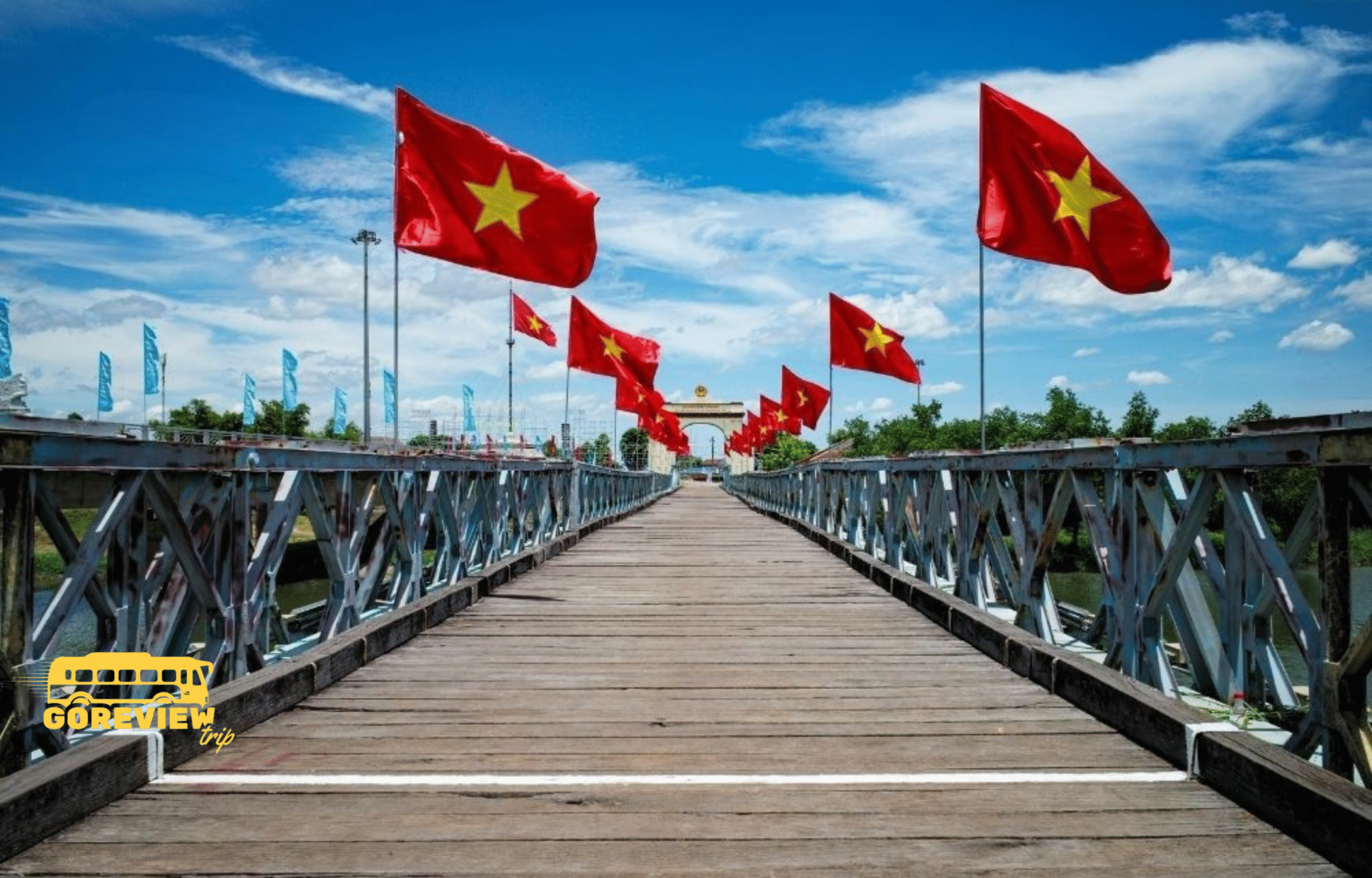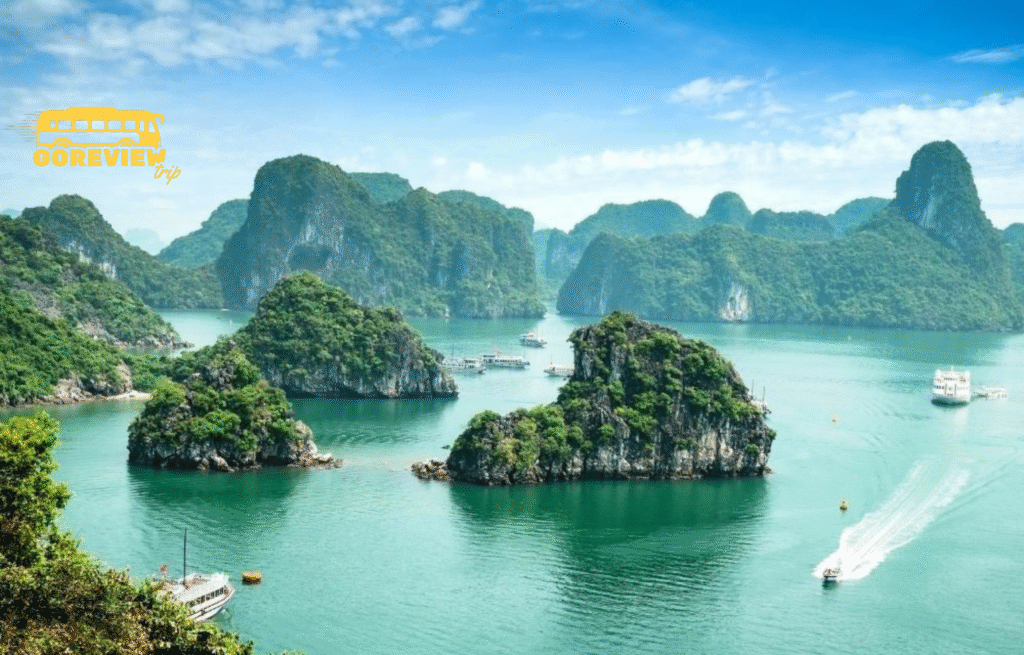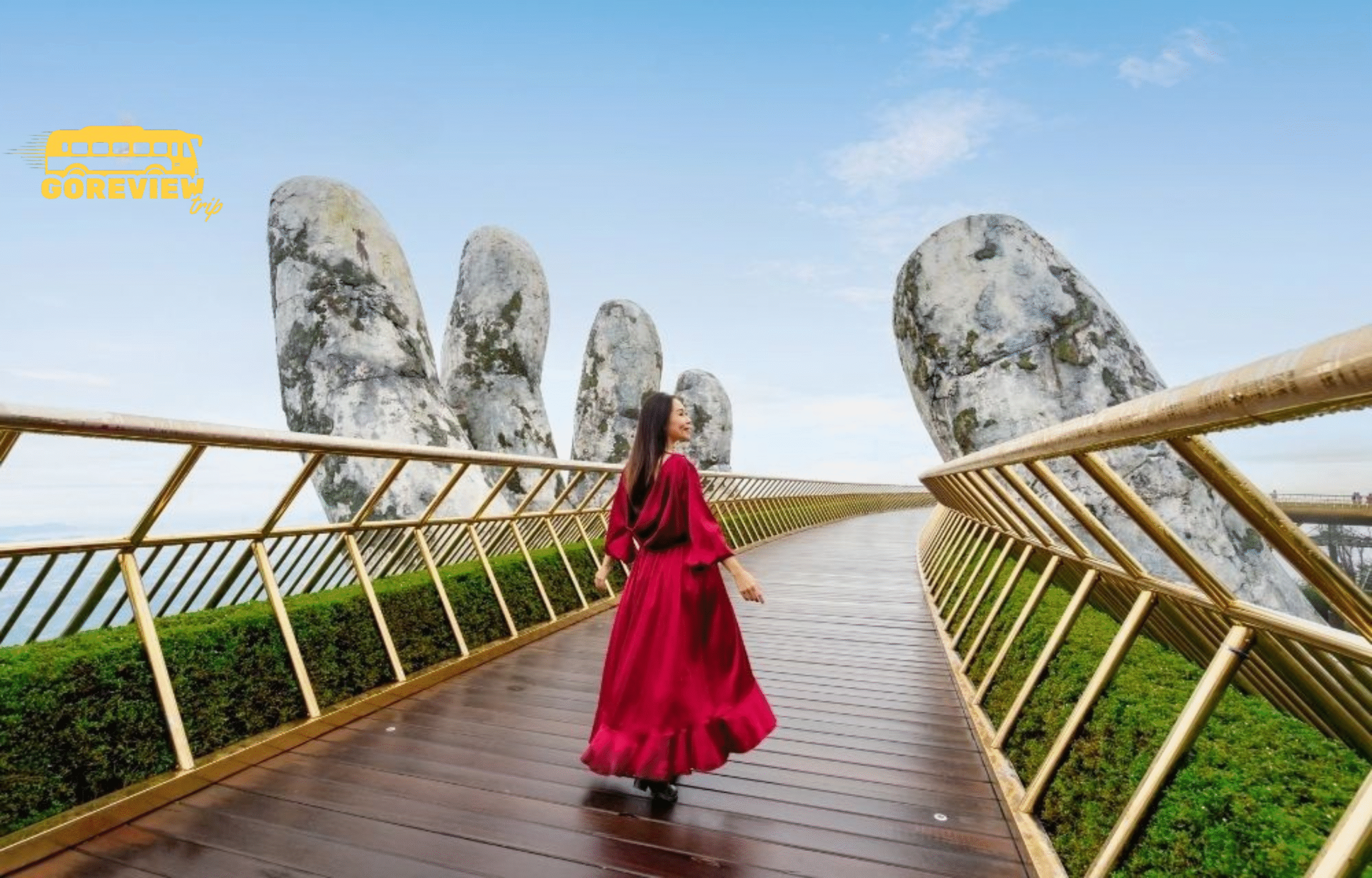Vietnam and Cambodia, two jewels of Southeast Asia, beckon travelers with their rich tapestry of ancient history, vibrant cultures, breathtaking landscapes, and warm hospitality. From the bustling streets of Hanoi and Ho Chi Minh City to the majestic temples of Angkor Wat, and from the serene waters of Halong Bay to the pristine beaches of the Cambodian coast, these nations offer an unforgettable journey. As you plan your adventure to these captivating destinations, a crucial question often arises: “When is the Best time to travel to Vietnam and Cambodia?” This comprehensive guide will delve into the climate patterns, seasonal variations, and key considerations to help you pinpoint the ideal time for your seamless and memorable trip.
Table of Contents
Understanding the Climate of Vietnam and Cambodia
Before you can determine the ideal time to travel, it’s essential to understand the diverse climate of Vietnam and the more uniform weather patterns of Cambodia. As neighboring countries in Southeast Asia, they share a general tropical monsoonal climate, which means the year is primarily divided into two seasons: the dry season and the wet season. However, geographical differences lead to significant variations.
Vietnam’s Climate
Due to its long, narrow shape, Vietnam’s weather can be drastically different from north to south.
- Northern Vietnam (Hanoi, Halong Bay, Sapa): This region experiences four distinct seasons. The cool, dry winter (November to April) is characterized by lower temperatures, especially in the mountainous areas where it can get quite chilly. Summer (May to October) is hot, humid, and sees the highest rainfall, often with heavy downpours. Spring and autumn are brief, pleasant transition periods.
- Central Vietnam (Hoi An, Da Nang, Hue): The climate here is a blend of the north and south. The long, hot, and dry season typically runs from February to August, with temperatures peaking in the mid-30s°C. The rainy season is concentrated from September to January, often bringing heavy rainfall and the risk of typhoons and floods, particularly in October and November.
- Southern Vietnam (Ho Chi Minh City, Mekong Delta, Phu Quoc): The weather here is consistently warm and humid year-round, with temperatures averaging around 25-35°C. It has two clear seasons: a dry season from December to April with abundant sunshine and low humidity, and a wet season from May to November, which is marked by short, heavy afternoon downpours that clear up quickly.
Cambodia’s Climate
Cambodia’s climate is more uniform across the country, making it simpler to plan your visit.
- Dry Season (November – April): This is generally considered the most pleasant time to visit. The weather is sunny, with low humidity and cooler temperatures, especially from November to February. By March and April, temperatures begin to climb significantly, often exceeding 35°C, making it the hottest period of the year.
- Wet Season (May – October): Also known as the “Green Season,” this period brings frequent afternoon and evening showers. While the rain can be intense, it rarely lasts all day. The landscapes transform into a lush, vibrant green, and the air is cleared of dust. Temperatures remain high, and humidity is at its peak.
The Ideal Window for Your Vietnam and Cambodia Journey (November – April)

When considering the [Best time to travel to Vietnam and Cambodia] for a combined trip, the dry season, spanning from November to April, consistently emerges as the most favorable period. This six-month window offers the most comfortable and predictable weather conditions across both nations, making it perfect for a wide range of activities.
- Why this is the [Best time to travel to Vietnam and Cambodia]:
- Favorable Weather Conditions: During these months, both Vietnam (especially its central and southern regions) and Cambodia experience their dry seasons. This translates to abundant sunshine, significantly less rainfall, lower humidity, and generally comfortable temperatures. While Northern Vietnam can be cooler, particularly in December and January, the overall climate is highly conducive to travel.
- Perfect for Outdoor Activities: The pleasant weather makes it ideal for exploring outdoor attractions without the discomfort of intense heat, humidity, or heavy rain. Whether you’re planning extensive sightseeing, relaxing on pristine beaches, or embarking on adventurous treks, these months provide optimal conditions.
- Beautiful Landscapes and Clear Skies: With minimal cloud cover and clear air, the natural beauty of both countries is at its most vibrant. This is perfect for photography, offering stunning views of iconic landmarks and picturesque scenery.
- Highlights during this period:
- Exploring Angkor Wat (Cambodia): The cooler, dry weather is perfect for navigating the vast temple complex of Angkor, allowing for comfortable exploration from sunrise to sunset.
- Cruising Halong Bay (Vietnam): Clear skies and calm waters enhance the majestic beauty of Halong Bay, making it an ideal time for overnight cruises and kayaking.
- Beach holidays in Phu Quoc, Nha Trang (Vietnam): Southern Vietnam’s beaches are at their best, offering sunny days, calm seas, and perfect conditions for swimming, snorkeling, and sunbathing.
- Visiting major cities (Hanoi, Ho Chi Minh City, Phnom Penh): City tours, exploring bustling markets, and enjoying street food are more enjoyable when the weather is mild and dry.
Traveling Vietnam and Cambodia by Season: Pros and Cons
Understanding the nuances of each season can help you tailor your trip to your preferences, even if you can’t travel during the absolute peak.
Peak Season (November – March)
This period largely overlaps with the ideal window for combined travel, offering the most consistently pleasant weather.
- Pros:
- Perfect Weather: Across most of Vietnam and Cambodia, you’ll find dry, sunny days with comfortable temperatures and low humidity, creating excellent conditions for all types of tourism.
- Minimal Rain: The likelihood of heavy downpours is significantly reduced, ensuring fewer disruptions to outdoor plans.
- Stunning Scenery: Landscapes are vibrant, and visibility is generally excellent for sightseeing and photography.
- Festivals and Cultural Events: This period often coincides with major cultural celebrations, including Christmas, New Year’s Day, and most notably, the Vietnamese Lunar New Year (Tet) and Cambodian Khmer New Year (Chaul Chnam Thmey). These offer unique insights into local traditions and festivities.
- Cons:
- Crowded: As the most popular time to visit, major tourist attractions like Angkor Wat, Halong Bay, and popular city centers can be very crowded.
- Higher Prices: Flights, accommodation, and tour prices are typically at their peak, especially around public holidays and the festive season.
- Requires Early Booking: Due to high demand, it’s crucial to book your flights, hotels, and popular tours well in advance to secure your preferred options and avoid disappointment.
- Special Note: Lunar New Year (Tet in Vietnam) and Khmer New Year (Chaul Chnam Thmey in Cambodia): While these festivals offer an incredible cultural experience, they can also impact travel. Many local businesses, shops, and even some attractions may close for several days, and transportation can be heavily booked and more expensive as locals travel to visit family. If you plan to travel during these times, research specific dates and prepare for potential disruptions and higher costs.
- Pros:
Shoulder Seasons (April – June & September – October)

These periods offer a balance between favorable weather and fewer crowds, often with more budget-friendly options.
Pros:
- Fewer Crowds: You’ll generally encounter fewer tourists at popular sites compared to the peak season, allowing for a more relaxed and authentic experience.
- More Reasonable Prices: Accommodation, flights, and tour prices tend to be lower, offering better value for money.
- Lush Green Landscapes: As the wet season approaches or begins to recede, the countryside becomes incredibly green and vibrant, particularly in rural areas and around the temples of Angkor.
- Unique Experiences: The changing weather can offer dramatic skies and unique photo opportunities.
Cons:
- Can be Hot and Humid: Especially in April and May, temperatures can be very high, and humidity can be intense, which might be uncomfortable for some travelers.
- Possibility of Sudden Rain Showers: While not as constant as the wet season, you should expect occasional heavy afternoon downpours, particularly from May onwards. These are usually brief but can disrupt outdoor plans if not factored in.
- Central Vietnam’s Rainy Season: Be aware that Central Vietnam experiences its heaviest rainfall and potential typhoons from September to November, which falls within this shoulder season.
Essential Tips for Planning Your Vietnam and Cambodia Trip
To ensure your journey is as smooth as possible, keep these practical tips in mind as you plan your adventure to Vietnam and Cambodia.
- Plan Ahead: This is especially crucial if you’re traveling during the peak season from November to March. Booking your flights, hotels, and popular tours several months in advance will not only secure your spot but can also save you money and prevent last-minute stress.
- Research Regional Weather: While the general climate is predictable, remember that Vietnam’s weather varies significantly by region. If your itinerary includes both Northern and Southern Vietnam, you’ll need to pack for different conditions, even within the same trip.
- Pack Appropriately: For the hot, humid weather common in both countries, light, breathable clothing is a must. A light jacket or sweater is a good idea for cooler evenings, especially in Northern Vietnam’s winter or on long bus journeys. Don’t forget an umbrella or a light raincoat if you’re traveling during the shoulder or wet seasons.
- Book Flights and Accommodation in Advance: High demand, particularly during holidays and the dry season, means prices can skyrocket and availability can be scarce. Early booking is the key to securing better rates and more options.
- Consider Travel Insurance: Unexpected events, such as flight delays, lost luggage, or medical emergencies, can happen. Having comprehensive travel insurance provides peace of mind and financial protection against these unforeseen circumstances.
- Learn About Local Culture and Festivals: Understanding a few basic phrases and being aware of local customs shows respect and can greatly enhance your interactions. Researching major festivals, like the Vietnamese Lunar New Year (Tết) or the Cambodian Water Festival (Bon Om Touk), can offer a unique cultural experience, though it’s important to be prepared for potential travel disruptions during these times.
Conclusion
Ultimately, the Best time to travel to Vietnam and Cambodia is a period of favorable weather that stretches from November to April. During these months, you’ll find the most comfortable conditions for exploring everything these two incredible countries have to offer, from ancient temples to stunning coastlines.
However, remember that each season has its own unique charm and benefits. Whether you’re drawn to the lush green landscapes of the wet season or the budget-friendly prices of the shoulder season, there’s no single “wrong” time to visit. By considering your own preferences, budget, and travel style, you can choose the perfect time for you. With a little planning and an open mind, you are sure to have a truly memorable and unforgettable trip.





